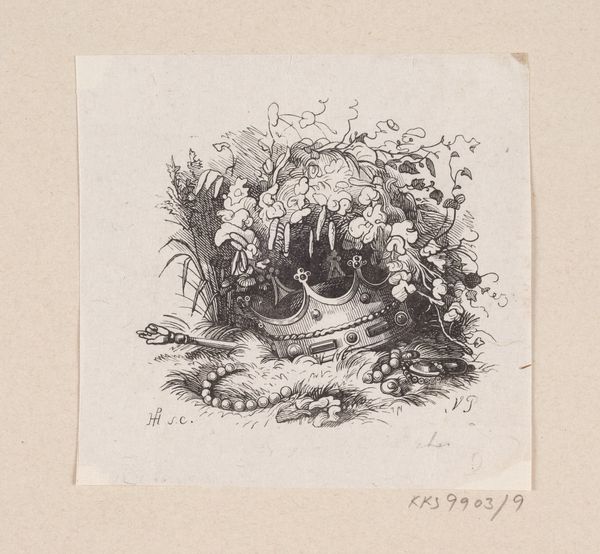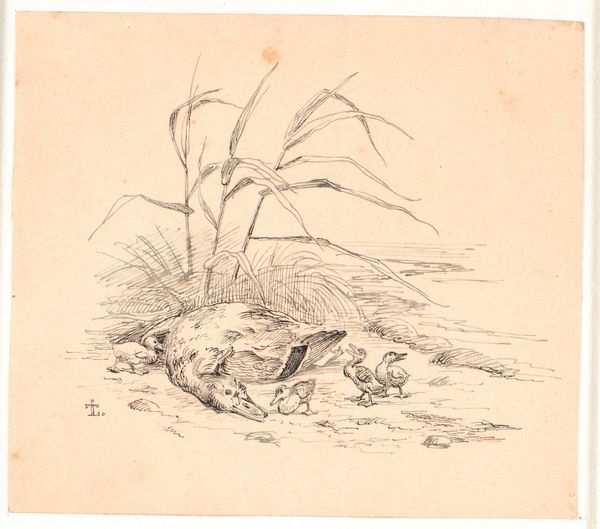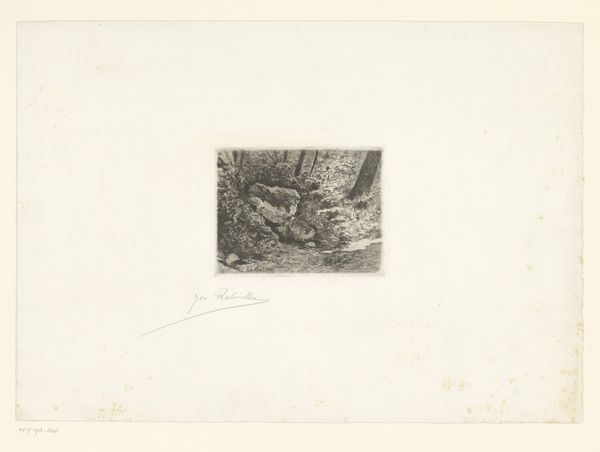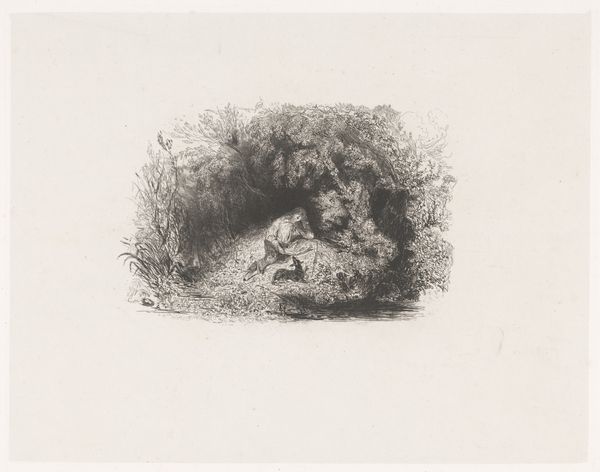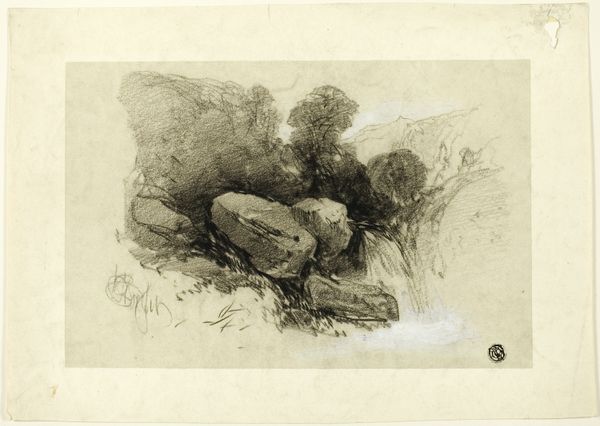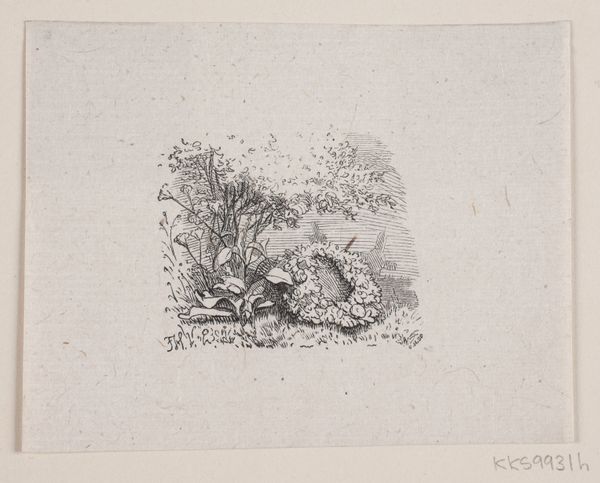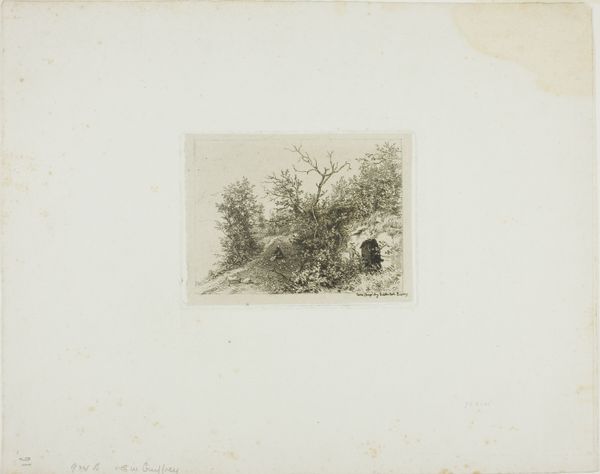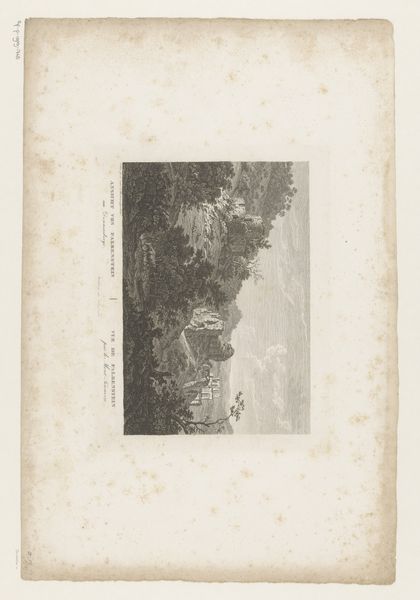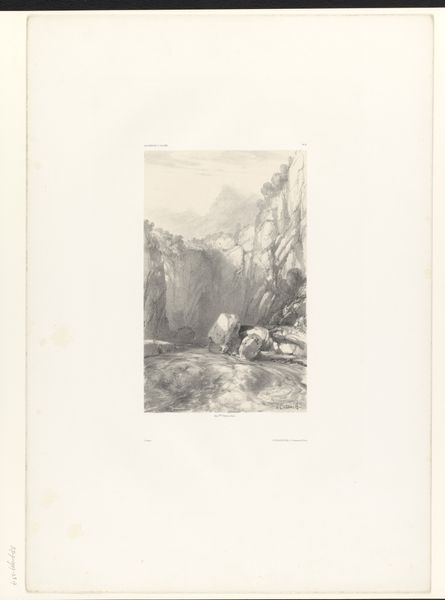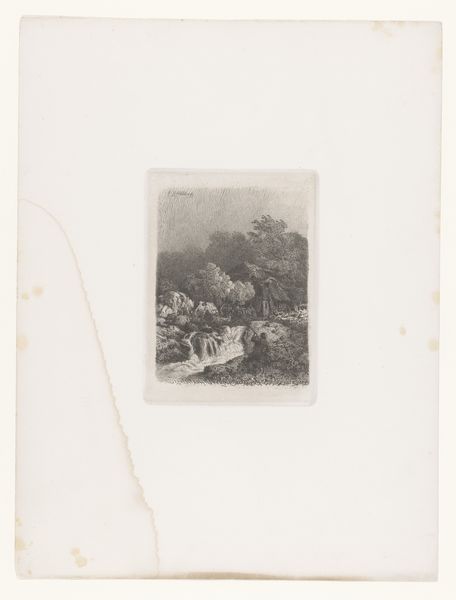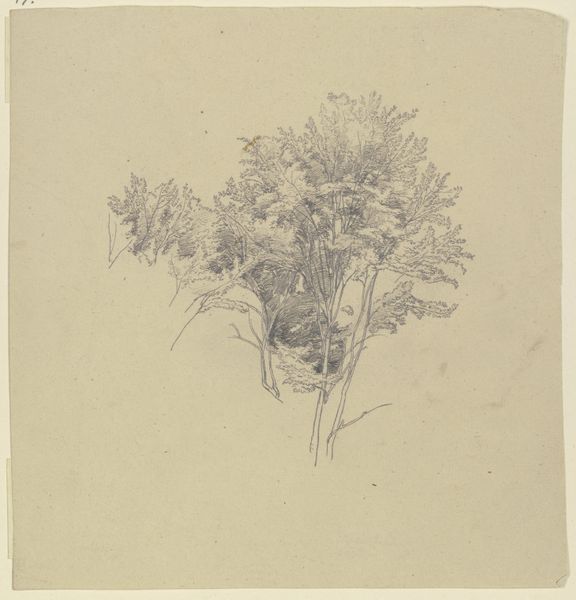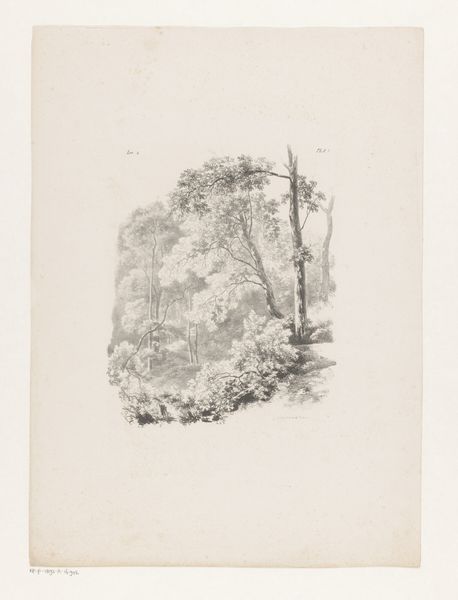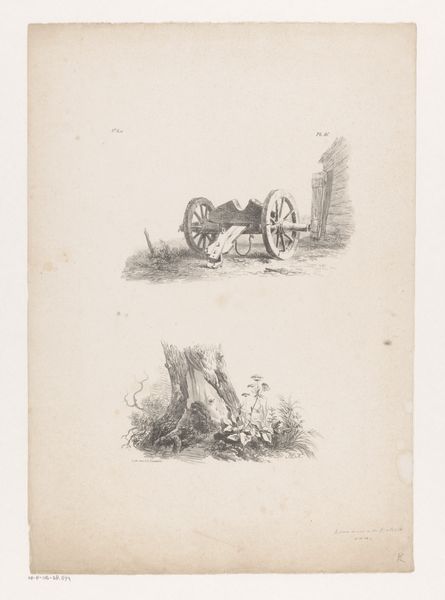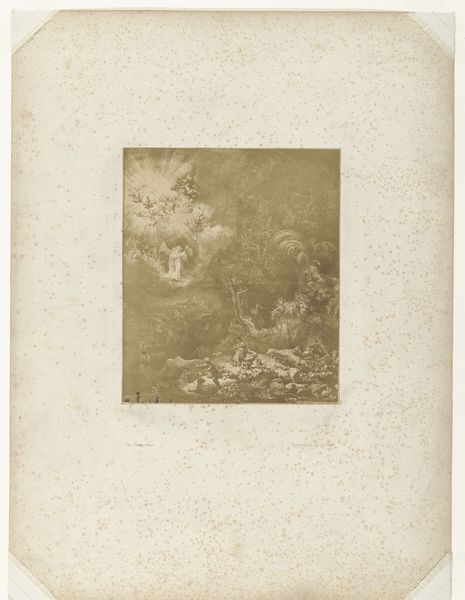
drawing, print, etching, ink, woodcut, engraving
#
drawing
# print
#
etching
#
landscape
#
ink
#
woodcut
#
line
#
engraving
Dimensions: 80 mm (height) x 77 mm (width) (bladmaal)
Editor: So, here we have H.C. Henneberg's "Vignet," created sometime between 1826 and 1893, employing drawing, printmaking, etching, ink, and woodcut techniques. The landscape has a slightly whimsical air. How do you interpret this piece? Curator: This "Vignet," seemingly a simple landscape, is brimming with socio-political implications, don’t you think? Consider the tradition of landscape art; who had access to nature, to land, and whose narratives were centered in representations of it? Henneberg's choice of such a common style can be seen as a commentary on these historical power dynamics, playing on who is permitted, literally and figuratively, into the frame? Editor: That's an interesting point. I hadn't really thought about the landscape as being about access. Is that something that would have been on people's minds back then? Curator: Absolutely. During Henneberg’s time, social inequalities were deeply embedded in land ownership and the visual representation of nature. By employing a technique like etching and woodcut, he also situates himself within a history of printmaking that allowed for wider distribution of imagery to reach more than the elite. To whom, in this historical context, might accessible imagery serve a particular purpose or act as a means of mobilization? Editor: So the very act of making a widely distributable image becomes a form of activism? Curator: Precisely! And furthermore, how do elements like line quality or the specific depiction of vegetation play into notions of identity, class, or even colonial power? How does an understanding of historical inequalities change our understanding of even the most innocuous landscape? Editor: That's given me so much to think about. I'll never look at a landscape the same way. Thanks for pointing out the layers of historical context. Curator: My pleasure. Engaging with the social and political layers transforms our encounter from passive appreciation to critical dialogue.
Comments
No comments
Be the first to comment and join the conversation on the ultimate creative platform.
